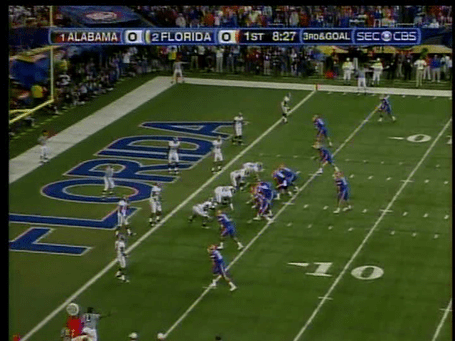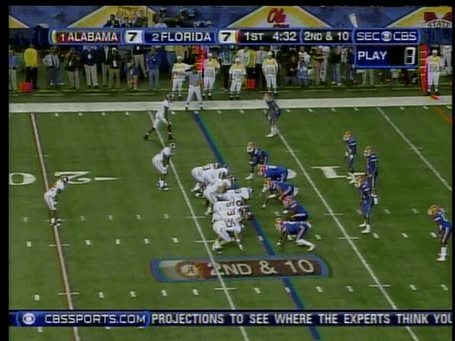In the end, three Gators got drafted and four more found jobs as undrafted free agents:
Percy Harvin, 1st round to Minnesota
Louis Murphy, 4th round to Oakland
Cornelius Ingram, 5th round to Philadelphia
Phil Trautwein to St. Louis
Jason Watkins to Houston
James Smith to Cincinnati
Kestahn Moore to Denver
It was a bit disappointing, all things considered. I had heard that Murphy and Ingram each had the potential to go as high as the second round. I never expected to see them have to wait until the fourth and fifth rounds to go.
In Murphy’s case, it may not have a happy ending. The Raiders at this point are a black hole for talent, though he does get to have JaMarcus Russell put football-shaped holes in his hands on Sundays. He’ll be a great addition to Oakland’s track team, along with Darrius Heyward-Bey, but whether Oakland will find football success is beyond me. Incidentally, I don’t think Heyward-Bey is any better than Murphy is, but the inanity surrounding 40 times at the combine made him a No. 1 pick. Go figure.
In Ingram’s case, it is probably a blessing in disguise. Philly had the best draft in my estimation, and with Jeremy Maclin, LeSean McCoy, and Ingram, no one upgraded their offense more. He did say in an interview that the Eagles would have taken him earlier if they had a third or fourth round pick, so that makes him (and me) feel better. Regardless, he’s going to be on one of the NFL’s best offenses within two years thanks to McNabb, Westbrook, Jackson, and his fellow draftmates.
It seems odd to me that neither of the tackles got drafted. I know that Trautwein and Watkins weren’t going to be franchise cornerstones, but I would have thought they’d be worth a late round pick. It seemse like the NFL hasn’t been liking Florida offensive linemen lately, though that will probably change whenever the Pouncey brothers enter their names in.
I am glad to see Moore get picked up by Denver. He has no shot at playing running back there, as Denver now has about 15 of them on the roster, but he could make it as a blocker and a special teams guy. Last season had to be tough for him, having lost his feature back role to a couple of freshmen. However, he apparently never complained and kept on picking up blitz after blitz to buy Tebow time. Say what you want about his running back play, and someone probably already has, but the guy can block and could be in the league for at least a few seasons.
I am also glad to see James Smith get picked up. He’s a former walk on who will be remembered by die hard Gators as the guy who recovered South Carolina’s ill-fated throwback during a kickoff last season. It’s rare that long snappers ever get drafted, so he really never had a shot at hearing his name called over the weekend. However, he probably has a decent shot at making a roster somewhere due to his specialization and demonstrated ability to play well on special teams.
Next year, Florida will have a boatload of guys in the draft. Seniors like Spikes, Tebow, and Cunningham will be there, and underclassmen like Haden, Dunlap, and the Pounceys will probably be there too. Some mock drafts for 2010 are already out there, but I won’t link to any since they’re of no use now. After all, at this time last year, Todd Boeckman and Cullen Harper were no worse than second round picks.
What I do know is that the thin draft is not a sign of weakness, as FSU’s and Miami’s were, but the last echoing effect of the final, uncertain year of the Zook era and the transitional class that Urban Meyer had to throw together at the last minute in 2005. Only five players who we’ll see take the field from that time remain: Dorian Munroe, Jonathan Phillips, David Nelson, and Ryan Stamper in the two-deep plus Cade Holliday on special teams.
Next year is when Meyer’s monster 2006 recruiting class (minus Percy, of course) finally hits the draft. But before that, there is the matter of the fall when those seniors lead Florida to its third title in four years.



 Posted by year2
Posted by year2 





